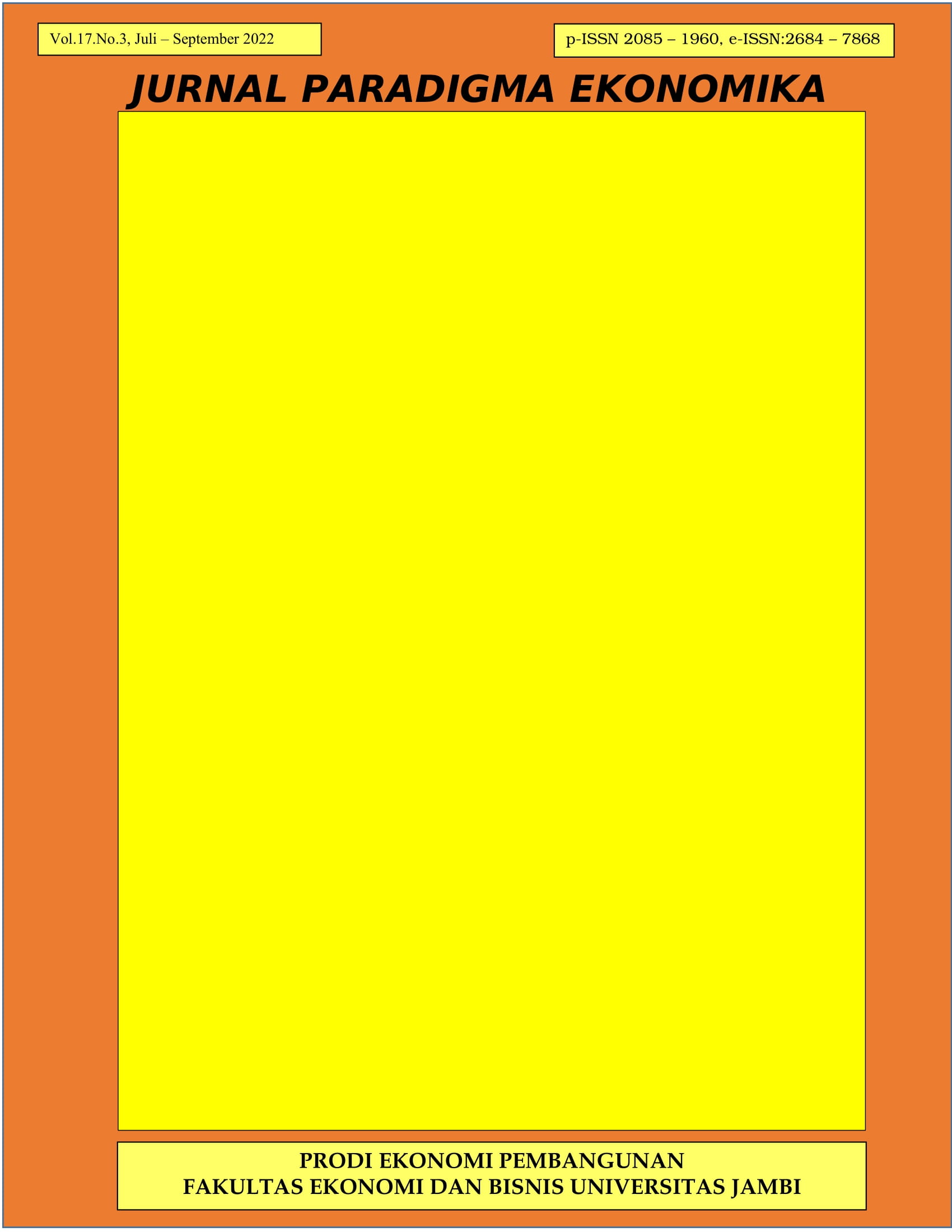Faktor yang mempengaruhi neet pada masa pandemi Covid-19 di Indonesia
Keywords:
NEET, youth unemployment, COVID-19Abstract
In 2030, Indonesia is predicted to reach the peak of the demographic bonus. However, there is a worrying problem, namely youth unemployment, which reaches 1 in 5 youths aged 15-24 years. This study aims to determine the general description and factors that cause a person to become a NEET in Indonesia using the 2020 Sakernas data. The analytical methods used are descriptive statistics and inferential statistics with binary logistic regression models. The results show that with a 99 percent confidence level, the variables that significantly affect a person's status as a NEET are age, gender, disability, marital status, education, and area of residence, while the impact of COVID-19 has no significant effect.
Downloads
References
Abrar, Muhammad, Nuelda Amalia, dan Rossanto Dwi Handoyo. (2019). Karakteristik dan peluang pengangguran usia muda di provinsi aceh dalam menghadapi era revolusi industri 4.0 [Characteristics and opportunities for young unemployed in Aceh Province in the face of the Industrial Revolution 4.0 era].†Jurnal Kebijakan Pembangunan 14 (2): 157–69.
Adioetomo, Sri Murtiningsih, (2012). Transisi demografi, bonus demografi, dan the window of opportunity.
Anggraini, Werry Darta Taifur, dan Zulkifli N. (2020). Phenomenon and determinant characteristics of NEET (Not in Employment, Education or Training) youth in matrilineal province. Jurnal Perspektif Pembiayaan dan Pembangunan Daerah 7 (4): 327–340. https://doi.org/10.22437/ppd.v7i4.8690.
Bappenas. (2017). Bonus demografi 2030-2040: strategi indonesia terkait ketenagakerjaan dan pendidikan. Bappenas: Jakarta.
Bay, Ann-Helén, dan Morten Blekesaune. (2002). Youth, unemployment and political marginalisation. International Journal of Social Welfare 11 (2): 132–39. https://doi.org/10.1111/1468-2397.00207.
BPS. (2020). Persentase umur muda 15-24 Tahun yang sedang tidak sekolah, bekerja atau mengikuti pelatihan, 2016-2020. Diakses Tanggal 30 Maret 2022. https://www.bps.go.id/indicator/6/1186/1/persentase-umur-muda-15-24-tahun-yang-sedangtidak-sekolah-bekerja-atau-mengikuti-pelatihan.html
BPS. (2020). Tingkat pengangguran terbuka berdasarkan kelompok umur, 2015-2020â€. diakses tanggal 31 Maret 2022. https://www.bps.go.id/indicator/6/1180/1/tingkat-pengangguranterbuka-berdasarkan-kelompok-umur.html
Hosmer, DW & Lemeshow, S. (1989). Regresi logistik terapan. AS: A Wiley-Publikasi Antarsains.
ILO. (2017). Global employment trends for youth 2017. In International labour office. https://doi.org/9789221301080
Khatun, F., & Saadat, S. Y. (2020). Youth employment in Bangladesh. in youth employment in Bangladesh.
Nachrowi, Nachrowi Dlalal, dan Hardius Usman. (2002). Penggunaan teknik ekonometri, pendekatan populer & praktis dilengkapi teknik analisis & pengolahan data dengan menggunakan paket program SPSS. Raja Grafindo: Jakarta.
Pattinasarany, Indera Ratna Irawati. (2019). Not in employment, education or training (NEET) Among the Youth in Indonesia: The Effects of Social Activities, Access to Information, and Language Skills on NEET Youth.†Masyarakat: Jurnal Sosiologi 24 (1),1–25. https://doi.org/10.7454/mjs.v24i1.10308
Setiawan, Satria Aji. (2018). Mengoptimalkan bonus demografi untuk mengurangi tingkat kemiskinan di Indonesia, Jurnal Analisis Kebijakan, 2(2).
Susiana, Wardah. (2019). Pemenuhan hak penyandang disabilitas dalam mendapatkan pekerjaan di BUMN. Law Reform 15 (2), 225–38. https://doi.org/10.14710/ lr.v15i2.26181
Wardhana, Adhitya, Bayu Kharisma dan Yayuf Faridah Ibrahim. (2019). Pengangguran usia muda di Jawa Barat (menggunakan data sakernas). E-Jurnal Ekonomi dan Bisnis Universitas Udayana, 8 (9): 1049-1062. https://ojs.unud.ac.id/index.php/EEB/ article/ download/53087/31459.
Downloads
Published
How to Cite
Issue
Section
License
Copyright (c) 2022 Angi Yefita Febria, Arief Ibrahim, Neng Kamarni

This work is licensed under a Creative Commons Attribution-ShareAlike 4.0 International License.









